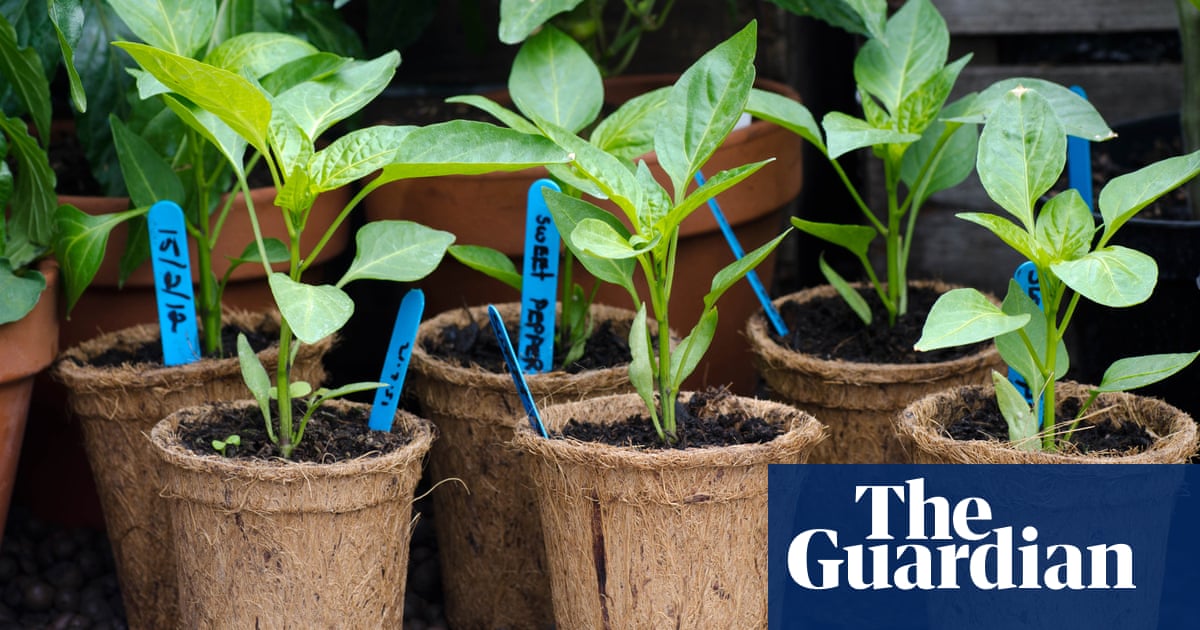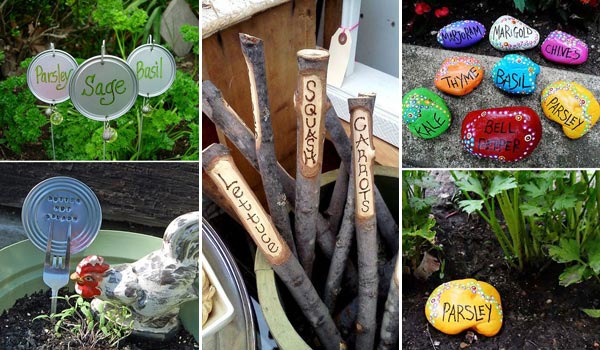Labeling plants in your garden is a simple process that involves using tags or markers to identify each plant species. By labeling plants, you can easily keep track of their names, care instructions, and other important details.

Credit: www.theguardian.com
The Importance Of Labeling Plants In Your Garden
Labeling plants in your garden is crucial for organization and maintenance. It helps you keep track of the different species and varieties, making it easier to care for them. By labeling plants, you can easily identify their specific needs, ensuring they receive the right amount of sunlight, water, and nutrients.
This results in healthier and more vibrant plants. Additionally, labeling plants allows you to plan and design your garden better. You can strategically place plants based on their growth habits, heights, and colors, creating a visually pleasing and well-organized garden.
It also helps you remember the names of various plants, especially if you are a beginner gardener or if you have a large collection of plants. Overall, using plant labels in your garden provides numerous benefits and is an essential practice for any garden enthusiast.
How to Label Plants in Garden: Step by Step Guide
Choosing The Right Type Of Plant Labels
Choosing the right type of plant labels involves considering a few key factors. First, think about the material used for the labels. Different options have their pros and cons. Plastic labels, for example, are durable but not the most environmentally friendly choice.
Metal labels are long-lasting but may be more expensive. Another factor to consider is the size and style of the label. It should be easy to read and clearly display the plant’s name. Additionally, consider the weather conditions in your garden.
Labels should be able to withstand exposure to sunlight, rain, and other elements. Finally, if you’re looking for eco-friendly alternatives, consider using biodegradable or recyclable labels. These options are more sustainable and better for the environment.
Tips For Effective Plant Labeling
Effective plant labeling is crucial for maintaining a well-organized garden. To ensure clear and legible labels, consider placement strategies that maximize visibility and accessibility. This will allow you to easily identify your plants and track their growth. Moreover, choosing appropriate labeling materials is essential, especially for different plant varieties.
Opt for materials that are weather-resistant and durable, such as plastic or metal tags. Additionally, consider using waterproof ink or markers to prevent fading and ensure longevity. By following these tips, you can create a beautifully labeled garden that is both aesthetically pleasing and functional.
So go ahead and label your plants with confidence, knowing that you have taken the necessary steps to create an organized and easily navigable garden space.
Diy Plant Labeling Ideas
Looking for creative and budget-friendly diy ideas to label your plants in the garden? Look no further! One great option is to upcycle everyday objects as plant labels. For example, you can use wine corks, popsicle sticks, or even old spoons.

Not only is this a cost-effective solution, but it also adds a unique touch to your garden. Additionally, you can incorporate artistic elements into your plant labeling approach. Consider using decorative rocks, painted rocks, or even hand-painted ceramic tiles to add some flair to your garden.
These artistic labels will not only help you identify your plants easily but will also enhance the overall aesthetics of your garden. Get creative and have fun with your plant labeling, while staying within your budget. Happy gardening!
Preparing Plants For Labeling
Preparing plants for labeling involves different methods for identifying plants before labeling. One important step is properly cleaning and organizing the plants. This helps ensure that the labels will adhere properly and remain readable. When labeling young or delicate plants, it’s important to consider their fragility and choose a labeling method that won’t damage them.
This could include using gentle adhesive labels or attaching tags to nearby stakes. By taking the time to properly prepare plants for labeling, you can ensure that your garden remains organized and easy to navigate. So, whether you’re labeling different plant species or marking specific areas in your garden, these considerations will help you effectively label your plants.
How To Write Informative Plant Labels
Labels play a crucial role in a garden, helping to provide essential information about the plants. When labeling plants, it is important to include specific details that inform the gardener and others. Essential information to include on plant labels includes the plant’s name, sun and water requirements, planting instructions, and any special care needed.
Labeling techniques for herbs, vegetables, and flowers vary, but they should all provide clear and concise information. In addition to traditional labels, utilizing qr codes and digital tools can enhance the plant labeling experience. These technological advancements allow users to access detailed information about the plants using their smartphones or other devices.
By following these techniques and incorporating technology, gardeners can easily create informative plant labels that enhance their gardening experience.
Maintenance And Upkeep Of Plant Labels
Maintaining and preserving plant labels is essential for a well-organized garden. Regularly inspecting and replacing worn-out or damaged labels ensures that your plants are accurately labeled. To protect labels from weather conditions and prevent fading, consider using weather-resistant materials or reapplying protective coatings.

Another tip for organizing labeled plants as your garden grows is to create a systematic labeling system, such as grouping plants by category or location. This not only helps with identification but also facilitates easier plant care and maintenance. By following these practices, your garden will not only look visually appealing but also be a functional and efficient space.
So, make sure to give due attention and care to the labels in your garden for a seamless gardening experience.
Troubleshooting Common Labeling Issues
Labeling plants in your garden can sometimes be a challenging task. Whether it’s dealing with label loss or mix-ups, faded or unreadable labels, or preventing damage from pests or garden wildlife, there are solutions. To solve issues with label loss or mix-ups, consider using weather-resistant materials or markers that won’t fade easily.
If labels become faded or unreadable over time, you can try laminating them or using waterproof pens. To prevent label damage from pests or garden wildlife, consider using protective enclosures or cages around your plants. Additionally, regularly checking and maintaining your labels can help ensure they are always visible and legible.
Properly labeling your plants will not only help you keep track of their names but also add a professional touch to your garden.
Showcasing Your Labeled Garden
Labeling plants in your garden is an essential task for showcasing its beauty and organization. By strategically labeling your garden, you can create a visually appealing space that is easy to navigate. One effective strategy is to photograph and document your labeled plants for future reference.
This allows you to track the growth and progress of your garden over time. Additionally, sharing your labeled garden with others can offer inspiration and ideas for their own gardening projects. It’s a great way to connect with fellow gardening enthusiasts and create a sense of community.
So, take the time to label your plants and share the beauty of your garden with others.
Frequently Asked Questions For How To Label Plants In Garden
How Do You Label Plants In A Garden?
To label plants in a garden, you can use various methods such as plant markers, tags, or labels made from durable materials like metal or plastic. Simply write the plant’s name and any other relevant information on the label, and place it near the base of the plant.
What Are The Benefits Of Labeling Plants In A Garden?
Labeling plants in a garden offers several benefits. It helps you remember the names of different plants, assists in plant identification for visitors, and provides information about specific care requirements or maintenance. Labeling also adds an aesthetic element to your garden and makes it easier to organize and plan for future gardening tasks.
What Information Should Be Included On Plant Labels?
When labeling plants, it’s essential to include the plant’s common name and scientific name. Additional information such as planting dates, specific care instructions, or any notable characteristics can also be included. Ensure the information is clear, legible, and weather-resistant to maintain the labels’ usefulness over time.
Conclusion
Labeling plants in your garden is a simple yet essential task that can greatly enhance your gardening experience. By using clear and concise labels, you can easily identify different plants, keeping track of their names, care instructions, and other important details.
Not only does this save you time and effort in remembering plant information, but it also allows you to effectively plan and organize your garden layout. Additionally, labeling plants can be a fun and creative activity, allowing you to add a personal touch to your garden.
Whether you choose to use traditional labels, diy markers, or innovative ideas, the key is to ensure the labels are durable, waterproof, and clearly visible. So, get started on labeling your plants today and enjoy a well-organized and beautiful garden all year round.
Happy gardening!

